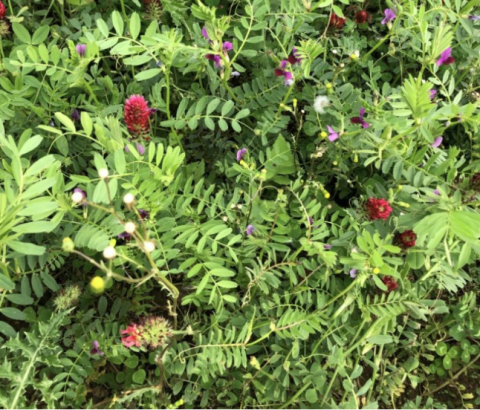As a non-cash crop, it is important to evaluate your soils to identify any issues and decide what you want to accomplish on a field-by-field basis before you sow any cover crops. Species selection should be based on what solution you want the cover crop to provide.
There are many reasons to grow cover crops
Cover crops can offer solutions for soil compaction, fertility building, pest management, livestock feed, cover over winter and more generally, improved soil health.
Addressing compaction issues with deeper rooting species will aid in breaking up the soil and improve porosity, leading to better water infiltration alongside nutrient and gaseous exchange. Incorporating leguminous plants, such as clover, will fix nitrogen, reducing dependency on artificial fertiliser for subsequent crops. Incorporating forage crops into covers which can then be strip or paddock grazed with out-wintered livestock may reduce costs from bought in feed. If arable only, it presents an opportunity to integrate livestock from a neighbouring farm.
Maintaining ground cover and persistence of living roots in the soil can also reduce competition from pests. Certain species of cover crops can even be selected to control the lifecycle of predators. For example, in a Farmer’s Weekly case study, a farmer described his strategy for controlling the population of free-living nematodes that were destroying his vegetables and sugar beet. In this case, a specific oil radish was used that stimulated the hatching of nematode eggs whilst simultaneously providing hostile conditions for their growth, causing slowing and ultimate cessation of nematode reproduction.
Improving soil health
Cover crops are also a useful tool to build stable aggregates to improve soil structure and increase soil organic matter and soil carbon to feed the soil biology. They act as a ‘savings account’, scavenging and assimilating residual nutrients from previous cropping which will then be released upon desiccation for the next crop.
Diversity in cropping is often mooted as a key method to improve soil health and productivity and incorporating cover crops is a fantastic way to introduce much needed diversity into the arable rotation. The idea is that a diverse mix of crops will bring along a diverse mix of rooting types, structures and lengths. Each root will support an array of bacteria and fungi with different apparatus to cycle the nutrients whilst extending and expanding the root network. Above-ground you are also providing a mosaic of solar panels of all different shapes and sizes, keeping the soil covered and maximising the surface area for photosynthesis, utilising the sun’s energy and pumping carbon back into the soil.
Practical tips for establishing and destroying cover crops
For optimum results you need the cover crops to progress quickly therefore warmer soils are usually required – late summer is best for legumes and phacelia, however, brassica and grass species can be sown as late as October. It is good practice to sow multiple species in any one field to optimise competition and gain maximum benefit. This can be especially good for controlling persistent weeds.
Destruction options vary depending on weather, crop type and available machinery. Some cover crops may die off with winter frosts or in hot weather a crimp roller can usually do the job. Ensure a clear plan is drawn out before sowing cover crops and allow a 4-6 week window between destruction and sowing the next crop.
Using cover crops to increase profit margins
It’s important to think of your bottom-line productivity when assessing whether to go for cover crops. It is an added expense, but the potential savings from reduced inputs could outweigh the additional cost. The benefits of having living roots in the soil all year round, alongside cover to buffer against adverse weather conditions will also improve soil quality, protecting our soils for future harvests and most importantly building business resilience.
This blog was written by one of our Farm Carbon and Soils Advisors, Tilly Kimble-Wilde. Find out more about her and the rest of the team here.



